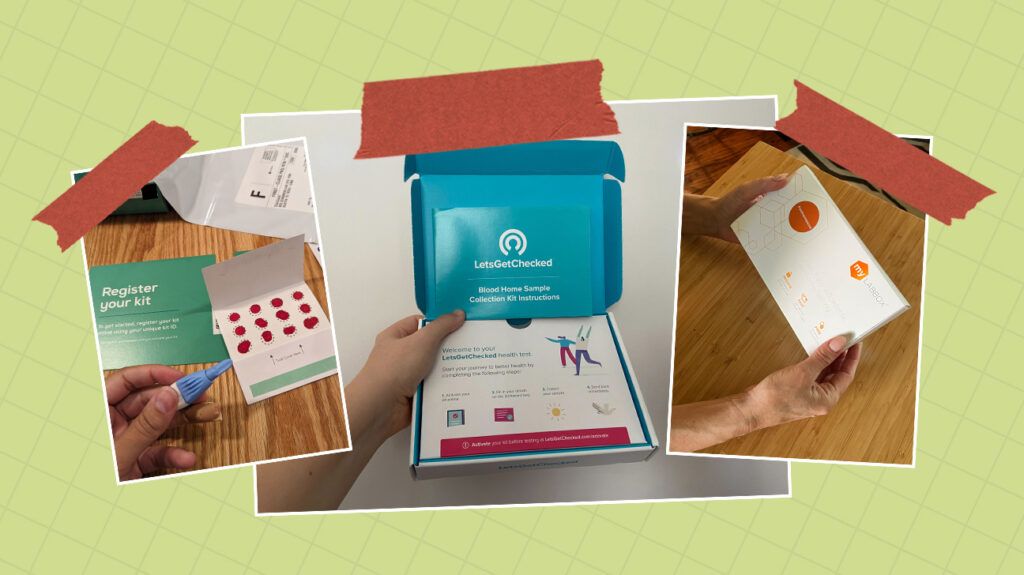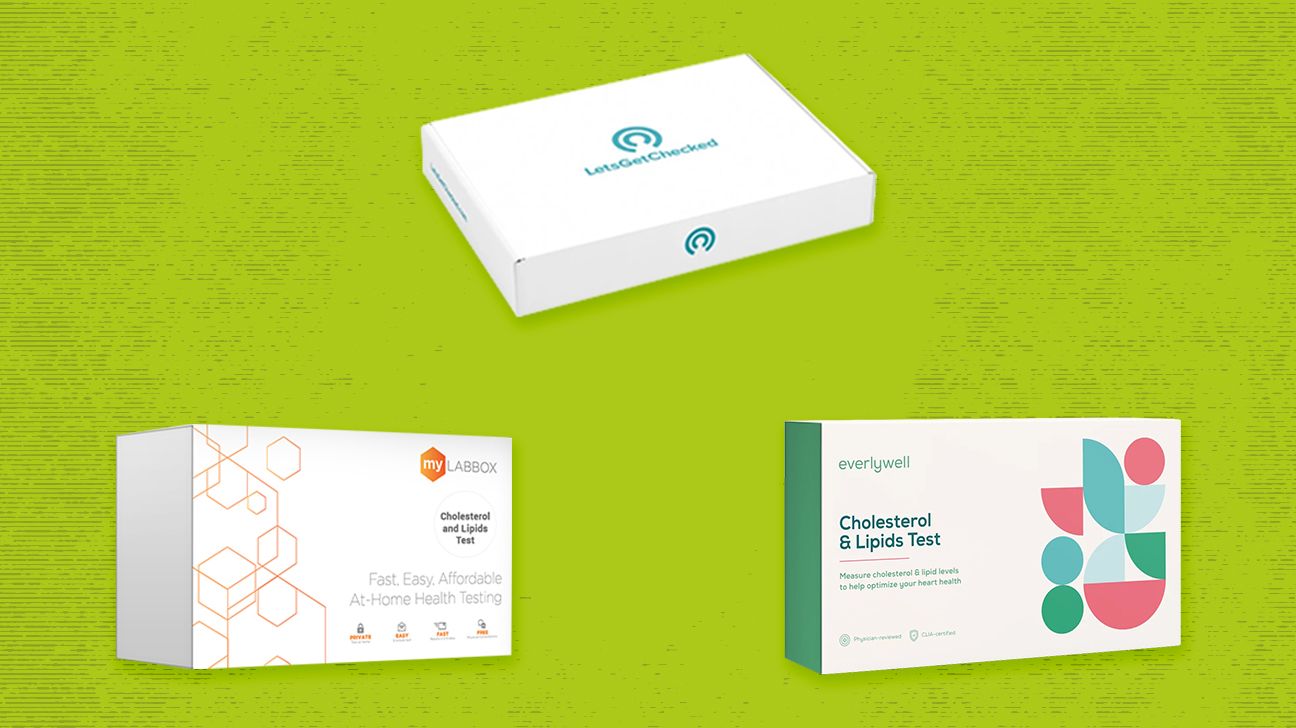The best at-home cholesterol tests allow people to check cholesterol levels without having to travel. We review the best at-home cholesterol tests on the market, vetted by our expert team.

- Best test result storage: CURO L7 Professional Grade Lipid Blood Cholesterol Test Kit | Skip to review
Cholesterol testing overview
Using at-home cholesterol tests is a convenient way for people to test their cholesterol levels without needing to make an appointment with a healthcare professional. Some can be bought with a HSA or FSA.
Home cholesterol tests require a person to place a drop of their blood on a provided test strip and read the color change. People can also buy an electronic meter, which requires them to add a drop of blood to a test strip, insert the strip into the meter, and read the results.
What they measure
There are two types of cholesterol that at-home tests measure for: low-density lipoprotein (LDL) and high-density lipoprotein (HDL). Cholesterol tests also measure triglycerides, which are a form of fat in certain foods.
- LDL: LDL (bad) cholesterol
makes up most of the body’s cholesterol. When a person has high LDL levels, the cholesterol builds up in their blood vessels, causing them to narrow. This prevents blood from flowing, which, in turn, increases the risk of heart attack and stroke. - HDL: HDL (good) cholesterol
collects the bad cholesterol from the arteries and carries it back to the liver so that the body can get rid of it. TheAmerican Heart Association (AHA) states that HDL may protect people from heart attack and stroke by preventing excess cholesterol from entering the arteries. - Triglycerides: These are common types of fats that people get from foods such as butter and oils. The body changes these calories into triglycerides and stores them in fat cells. It then releases them when it needs energy. According to the
AHA , people with high triglyceride and LDL levels may also have an increased risk of developing cardiovascular disease.
At-home cholesterol tests should provide information on LDL cholesterol, HDL cholesterol, and triglyceride levels. They should also provide a total cholesterol level, which combines all three of the above. sum level of all three of the above.
Manufacturers typically state that their tests are almost as accurate as those available at doctors’ offices and health clinics. The
Additionally, a
People using at-home cholesterol tests need to discuss their results with a doctor and opt for in-person testing if they find that their self-test has produced inaccurate results. Individuals should not make health decisions according to the results of an at-home test without discussing them with a doctor first.
Below are some at-home cholesterol tests a person can purchase online. Some are purchasable with an HSA or FSA.
The table below compares the tests in this article. All tests use a finger-prick sample collection.
| Price | Results in | Number of tests | |
|---|---|---|---|
| LetsGetChecked | $89 | 2 to 5 days | 1 |
| Everlywell | $49 | 5 to 7 business days | 1 |
| myLAB Box | $89 | 2 to 5 days | 1 |
| Curo L7 | around $199 | 3 minutes | 500 |
Medical News Today’s methodology
Medical News Today does not rank products or recommend one over another. A person can opt for the one that best fits their needs.
At MNT, we choose at-home cholesterol tests that meet the following criteria:
- Laboratories: We choose companies that process test samples in Clinical Laboratory Improvement Amendments (CLIA) certified labs when possible. These labs follow state and federal regulations.
- Budget: Although at-home tests can be expensive, MNT chooses tests that may be suitable for smaller budgets and more expensive options. We also highlight how people can save money on their at-home cholesterol tests with discount codes or subscription options.
- Privacy: We only include testing companies with robust, transparent privacy measures, such as data protection and discreet packaging.
- Test result speed: We include companies that inform customers when they will receive their results and whether they will arrive via email, app, or phone.
- Further support: Where possible, we choose testing companies that offer further support, such as a follow-up phone consultation with a doctor.
A person can ask a doctor to help choose an appropriate at-home cholesterol test kit. However, they may also wish to consider the following:
- Laboratories: A person should check whether or not a company works with CLIA certified laboratories. This indicates that they hold federal certifications and meet quality laboratory testing standards.
- Consultations: Many brands offer doctor’s consultations for people who wish to discuss their cholesterol test results. However, these may only be available to those receiving positive cholesterol test results.
- Design: Some devices are small, lightweight, and portable. These may suit individuals who travel regularly or need to test outside their homes. Some test kits also come with a travel case.
- Guide: Choosing a device with a user guide explaining how individuals should use the test kit is best. Some brands, such as LetsGetChecked, also provide instructional videos online.
- Subscriptions: At-home cholesterol test kits come with a one-time price, but some companies offer subscription plans for people who need to check their cholesterol levels regularly.
At-home cholesterol tests usually involve a person collecting a finger-prick blood sample. They can do so by following these steps:
- Wash hands thoroughly. Using an alcohol wipe, clean one of the fingers and leave it to dry.
- Remove the cap from the lancet and press it firmly into the clean fingertip to activate the needle. In some cases, there may be a button on the side of the lancet to activate it instead.
- Wipe away the first drop of blood with a clean tissue. Then, hold the finger over the tube and use a massage motion from the base to the fingertip to encourage blood flow into the tube. Fill the tube to the required amount.
- Bandage the finger, replace the safety cap on the lancet, and seal the tube.
- Follow the provided instructions to return the sample to the laboratory.
When to test
According to the
However, doctors may recommend more frequent cholesterol screenings for people with:
- a family history of heart attack and high cholesterol
- diabetes
- obesity
- hypertension
The CDC states that cholesterol levels should be as follows:
- Total cholesterol levels should be under 200 milligrams per deciliter (mg/dL).
- LDL cholesterol should be under 100 mg/dL.
- HDL cholesterol should be greater than or equal to 60 mg/dL.
- Triglyceride levels should be under 150 mg/dL.
People who receive a positive cholesterol test result should consider seeking medical advice. A doctor can help a person interpret their results and suggest the most suitable treatment plan.
Doctors may recommend specific home care strategies, such as exercise, reaching or maintaining a moderate weight, and following a balanced diet.
Also, a doctor
Learn more about how to lower high cholesterol with lifestyle changes.
People looking to lower their cholesterol can try eating fewer foods containing saturated fat, exercising more, reducing their alcohol intake, and stopping smoking, if applicable.
Learn more about how to lower cholesterol.
High cholesterol may not always cause symptoms. However, very high cholesterol can cause fatty bumps on the skin called xanthomas and gray-white rings around the cornea.
Learn more about the signs and symptoms of high cholesterol.
High cholesterol may not always cause symptoms. A blood test may be one of the only ways a person can find out if they have high cholesterol.
However, risk factors include having overweight, not exercising regularly, eating fatty foods, drinking alcohol, and smoking. High cholesterol may also have a genetic component and run in families.
A healthcare professional or home test manufacturers should provide instructions on whether a person needs to fast or if they can eat and drink as they typically would before taking a cholesterol test.
If a person needs to fast, this usually means they can only drink water for a certain amount of time before the test.
Learn more about what to eat the night before a cholesterol test.
A healthcare professional may advise a person to avoid eating, drinking most beverages, and taking medications for 8 to 12 hours before a cholesterol test.
However, not all cholesterol tests require fasting. A person should only fast if their doctor or the test manufacturer recommends it.
Learn more about fasting before a cholesterol test.
Cholesterol is a waxy, fat-like substance that travels through the bloodstream in the form of lipoproteins. It helps the body by:
- generating vitamin D
- producing bile acids that help the body absorb nutrients and digest fat
- producing hormones
The body produces cholesterol naturally. However, cholesterol is also present in some foods, including:
A person who wants to check their cholesterol levels can purchase an at-home test kit. These kits come with instructions and all the tools necessary to collect a sample.
People may purchase an at-home test kit from FDA-regulated companies collaborating with CLIA certified laboratories. This indicates that companies have established quality standards for laboratory testing.
People may seek guidance from a doctor if they have other health conditions or a family history of heart disease and high cholesterol. These individuals may need to check their cholesterol levels regularly.

